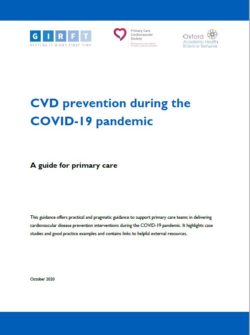 A new practical guide has been produced to help primary care teams across England overcome limitations created by Covid-19 and continue to deliver quality cardiovascular disease (CVD) prevention services.
A new practical guide has been produced to help primary care teams across England overcome limitations created by Covid-19 and continue to deliver quality cardiovascular disease (CVD) prevention services.
Since the arrival of the pandemic, patients are likely to have had less contact with healthcare professionals, leading to lower detection rates for CVD risk factors such as hypertension and atrial fibrillation. Symptoms of stroke, TIA or heart attack may also have gone unreported. At the same time, primary care teams have had to rapidly shift to remote working.
The new guidance was published in October 2020. It was produced through a collaboration between the Oxford Academic Health Science Network (Oxford AHSN), the Getting It Right First Time (GIRFT) programme and the Primary Care Cardiovascular Society (PCCS). It aims to signpost professionals to the right resources to address these and related issues. The guidance was pulled together by a wide-ranging team of national experts and includes experience from the NHS primary care frontline. The resources were described as ‘fantastic’ in this blog from Public Health England published in February 2021.

